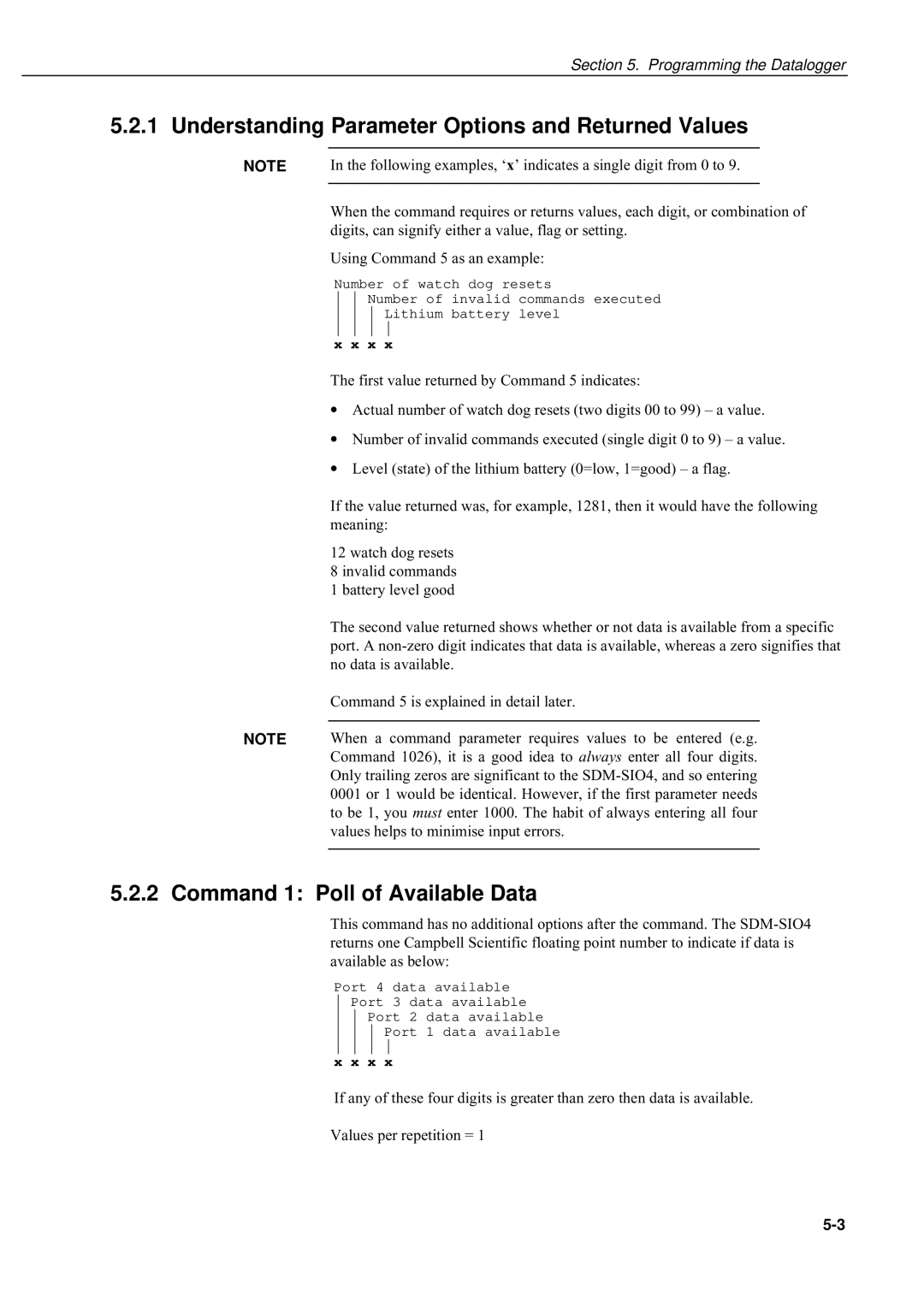
Section 5. Programming the Datalogger
5.2.1 Understanding Parameter Options and Returned Values
NOTE In the following examples, ‘x’ indicates a single digit from 0 to 9.
When the command requires or returns values, each digit, or combination of digits, can signify either a value, flag or setting.
Using Command 5 as an example:
Number of watch dog resets
Number of invalid commands executed
Lithium battery level
x x x x
The first value returned by Command 5 indicates:
∙Actual number of watch dog resets (two digits 00 to 99) – a value.
∙Number of invalid commands executed (single digit 0 to 9) – a value.
∙Level (state) of the lithium battery (0=low, 1=good) – a flag.
If the value returned was, for example, 1281, then it would have the following meaning:
12 watch dog resets
8 invalid commands
1 battery level good
The second value returned shows whether or not data is available from a specific port. A
Command 5 is explained in detail later.
NOTE When a command parameter requires values to be entered (e.g. Command 1026), it is a good idea to always enter all four digits. Only trailing zeros are significant to the
5.2.2 Command 1: Poll of Available Data
This command has no additional options after the command. The
Port 4 data available
Port 3 data available Port 2 data available
Port 1 data available
x x x x
If any of these four digits is greater than zero then data is available.
Values per repetition = 1
